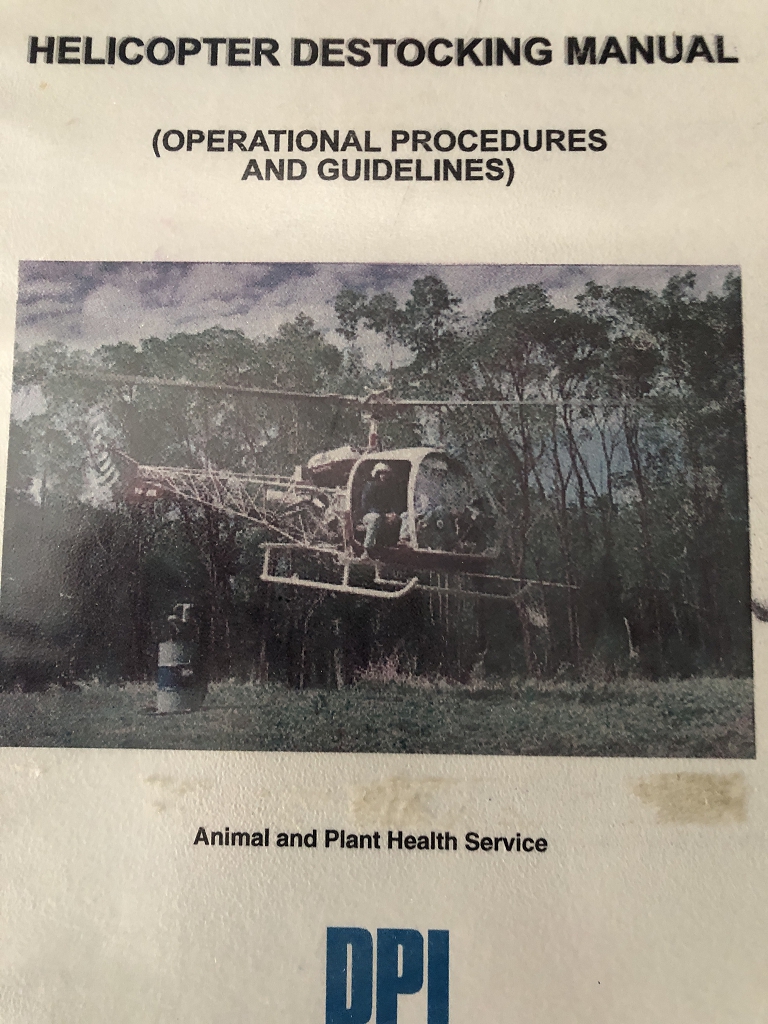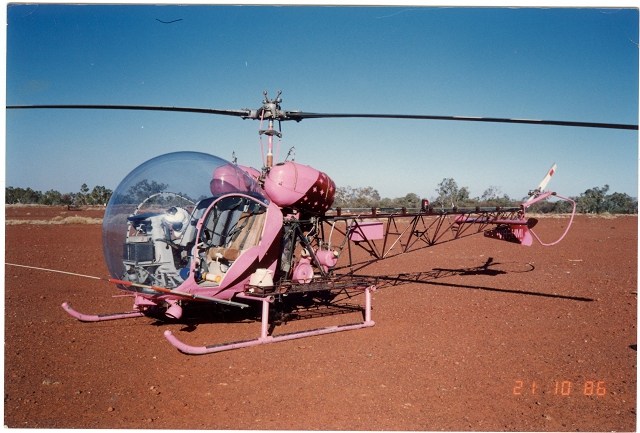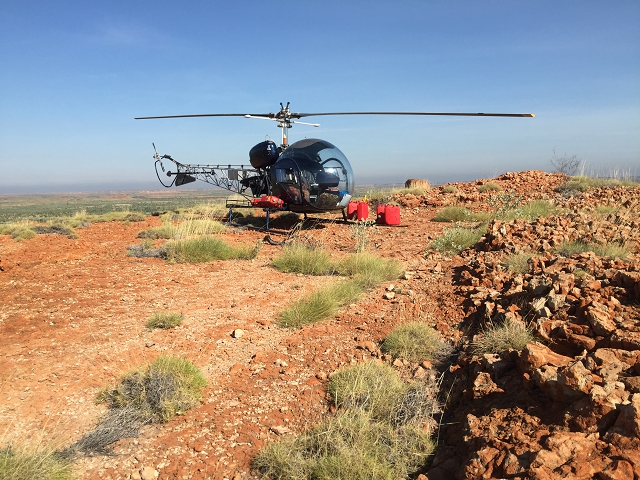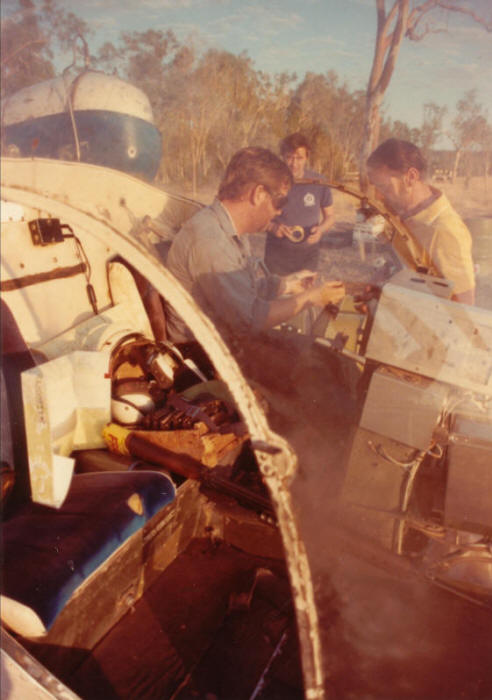ad
The early 1980s feral
and BTEC animal eradication programs in
the North West Kimberly region and across the top end of of Australia mainly utilised Bell47G-3BI turbocharged machines.


They were often modified
to improve agility by having
the Main Rotor system stabiliser bar and damper
system removed.

The Turbocharged Bell47G 3B1 - with
an increase in Turbo boost pressure up to
34 or 35 inches of Manifold Air Pressure as an
emergency safety margin - enabled the machine to
handle the hot and humid ambient temps with markedly improved performance.
Flight endurance was extended by carrying three
or more 20 litre Jerry Cans
strapped to the cargo racks.

This type of flying translated into
pilot fatigue after 4 or 5 weeks at
3 X 3.5+ hour sorties every day
A real problem was the shock wave from the rifle muzzle blast.
It travelled around
the bubble and seemed to come back thru the pilots door and, even though I wore
a helmet, hit me squarely and painfully in
the forehead. I had to train myself not to flinch as every round was fired, even
though it physically felt like someone was hitting me with a hammer.
Ordnance was two or three 7.62mm (308) SLR
military heavy duty
barrel rifles (see one in
the machine below) required due the high firing rate contributing to coking and
therefore jamming or misfiring. These rifles where set for single shot rather
than automatic as humane shooting required a single head shot.
Normally spare
guns were strapped to the RH cargo rack so that the shooter could quickly access
them when the primary unit went unserviceable due the heavy fire rate.
In the
photo, you can see the ammunition (1500 rounds+) and spare clips in a wooden box strapped
into the space where the centre seat has removed.
Often when the firing was intense, it was not uncommon for me
to be furiously loading the spare 20 round clips while trying to
make sure the machine missed all the obstacles and maintaining it in a sideways slip to set up the
.5 of a second moment when the opportunity was available for the shooter to aim squarely for
and take a
head shot at an animal - which itself was ducking and weaving at high speed
among the boulder and trees.
The RH door frame in this photo is severely chipped from the ejecting hot
cartridge cases. About a meter of the front of the RH skid tube was also usually
shot off after three weeks into the
season due to the shooter quickly
firing as an animal moved quickly
from side to side or I had to
maneuver the helicopter to avoid
hitting trees or rocks.

The shooter had to be very careful, as the close range meant that we
had problems with rock chips and spent rounds flicking up and back at us. The
rounds would sometimes flatten on the rocks and turn into a ricocheting spinning hot and lethal disc
which occasionally flicked back in our direction.
A good shooter would average about 2
to 3 rounds per animal over
the 5 weeks (40-50,000 rounds during the 4 week period). The best - a wonderful aboriginal friend of mine - Cyril Hunter -
averaged 1.5, shooting the SLR mainly from the hip. He had rhythm!
My records show one sortie of 480+ in 1.7 hours (including the
return ferry flight). We had to cease as we ran out of
ammo and burst (split) the heavy duty barrel of one rifle and the others went
US.
The Government shooter for that sortie was a bloke named Macca
from the town of Halls Creek. We both never forgot that sortie and it was like old times
when we had a beer together while catching up 15 years later when I presented a
Safety course in Derby to the new Government shooters.
'On ya Macca! You were great.'




